Jeep Wrangler Vs Toyota 4Runner Comparison

If you want a capable off-roader that also doubles up as a daily driver, the Jeep Wrangler is the only choice, right?
However, there exists another low-key capable daily off-roader that few consider. While it might not outperform the Wrangler off the road, it has advantages that can worry even the most venerable of off-roaders and is of the Japanese variety. If you haven’t guessed it already, it’s the Toyota 4Runner. It’s honestly no wonder that its owners swear by their 4Runners. The Toyota shares its platform with the Tacoma which in turn is heavily inspired by the Hilux, the pickup truck that famously refuses to die. Most of the off-road adventure automotive content you see on the ‘tube (YouTube), usually has a Toyota as the backup vehicle carrying spares, equipment, and crews whilst still traversing the same challenging driving conditions.
Get a Quote on a New Jeep Wrangler or Toyota 4RunnerWhile the Jeep Wrangler is the go-to icon in the off-roading community, the 4Runner has a rather dedicated following of its own. But do you really need to compromise on road manners to have an SUV with go-anywhere ability or is there a middle road that exists? Only one way to find out.
Styling
Wrangler: If there was ever a competition on “most recognizable faces”, the Wrangler would win it hands down. And there’s a good reason for that, the Wrangler has had the same face, number of slats notwithstanding before the Wrangler nameplate even existed. Hell, before even the Jeep name existed. Jeep also has the Wrangler to thank for its iconic seven-slat grille that graces every Jeep in production. If you have something that’s unchanged since the forties, it will be as recognizable as Captain America.
It might be less aerodynamic than a cow but the Wrangler instantly strikes you as something you would want to drive and be seen in. In the city, it looks like a hog on a sheep farm but that’s the whole point. Plus, the option to remove the roof and almost everything with a hinge is strangely liberating.
4Runner: Where the Wrangler is the flamboyant one, the 4Runner looks more, conventional. I agree with Kyle when he says, “It does have a certain “default SUV” appearance to it, in a good way. If you think about an off-road-ready SUV, it’ll be shaped about like this.” It is conventional but only compared to the Wrangler. Sure, any non-enthusiast will likely not spare a second glance despite its 17-inch matt-grey wheels with side-wall tires and the Yakima basket up top. You could ford a slush bath and drive straight to fetch your kids from school and no one would bat an eyelid.
It does however, garner envious glances from enthusiasts and fellow 4Runner owners alike. While it might not garner the unanimous response of the Wrangler but those who know, know.
Interior and Cargo Space
Wrangler: The upright dash– Kyle prefers “cliff-like”– is quintessential Wrangler and looks purposeful even if a bit constricting. Since the doors are designed to come off, all controls are on the center dash which looks quite busy. And the center console is all you get in terms of storage space of which there isn’t much. You get two cup holders and some storage in the center armrest. You can keep items you don’t mind losing in the mesh door pockets. Also, be wary, your Timberlands might snag in the mesh.
The cloth seats are comfortable enough but this being the Sport S trim are only manually adjustable. A hoseable cabin is mostly made of plastic and is devoid of materials that aren’t hydrophobic. The biggest issue, however, is the space, rather the feeling of it. The Wrangler offers 40.7 inches (1,036 mm) of headroom in the front row which is two inches more than the Toyota.
In the rear, it offers 40.2 inches (1,023 mm) of headspace which too is more than the 4Runner. But yet, you feel quite constrained. The doors are not only thin and flat but also quite close to your elbows. Sometimes uncomfortably so. Now I understand why people love to take the doors off their Jeeps. Anyway, the short and steeply raked windshield coupled with an exposed roll-cage, a cliff-like dash, and an overall narrower cabin feels constricting. Not the cabin for people with claustrophobia.
SEE ALSO: 2021 Jeep Wrangler 4xe Review: First DriveIn the rear, things are a little better thanks to a 118-inch (3,008 mm) wheelbase which frees up 38.3 inches (904 mm) of legroom. While your legs can breathe easy, the proximity to the roll-cage and the smaller windows make the rear bench feel tight. As for cargo, you can fit 31.7 cu-ft (898 liters) of luggage behind the second row provided the doors and roof stay on or at home. Folding the bench down expands the cargo capacity to 72.4 cu-ft (2,050 liters).
4Runner: As with the styling, the cabin is also more conventional than Wrangler’s and you will be thankful for it. There’s no fancy leather coated dash here either but everything is spread out and feels spacious. The extra two inches of width and subsequent shoulder room certainly helps. Ironically though, both front and rear headroom at 38.6 inches (980 mm) in either row is full two inches less than the Wrangler and yet it doesn’t inadequate despite a seemingly higher seating position. Speaking of, the driver’s perch is quite high even at its lowest setting. But it feels ergonomic and provides a commanding view of the surroundings. A sizeable glasshouse adds to the feeling of space. The dash too is minimalistic and houses three chunky dials–five if you include the ones for volume and radio–all for the aircon and work well with muscle memory alone. Kyle also feels that the integrated 8.0-inch infotainment system looks better than the pop-out units we are used to on more modern Toyotas and I am inclined to agree.
Both of us also prefer the seating of the 4Runner to the Wrangler’s. On paper, the 4Runner is less spacious and sacrifices precious legroom, a little over five inches of it in fact for a bigger trunk. But you don’t feel the dearth of legroom in the second row despite a nine-inch wheelbase deficit. The seats are enveloping and provide plenty of under-thigh support. They also feel solid whereas the ones on the Wrangler tend to feel rather flimsy and lacking in thigh support.
A shorter wheelbase translates into a rather large trunk that trumps the Wrangler’s by a mile. It offers 46.3 cu-ft (1,311 liters) of cargo space with both rows up. With the second row down, the capacity expands to 88.8 cu-ft (2,515 liters), enough to pack supplies and camping equipment at the same time. Then there is the Yakima basket on the roof for even more equipment. And if you want even more versatility, the Trail comes with a large ice cooler and a slidable trunk deck from the factory.
Bottom Line: The Wrangler might be more spacious on paper but the 4Runner does a much better job of utilizing the space available. It not only feels more spacious but offers more comfortable seating as well.
Powertrain and Driving Feel
Wrangler: Pushing out 270 hp and 295 lb-ft of torque, the 2.0-liter four-pot turbo is only conservative in engine capacity. It actually delivers 35 lb-ft more torque than its larger V6 sibling. It is a tad down on power compared to the Pentastar but the extra torque and a strong mid-range more than make up for it, especially off the road. It ties to an eight-speed automatic transmission that primarily drives the rear wheels unless you use the little transfer case lever to put it in one of three 4WD modes.
“The 2.0 feels so much more strained when not boosted by the 4xe” feels Kyle as he had recently driven both back to back. But compared to the 4Runner, the Wrangler has a more tractable powertrain. Plus, a more modern eight-speed transmission certainly helps. It also comes with start/stop to help maximize fuel efficiency which is quite advantageous in the city. While it might look out of place in an urban setting, it certainly can handle it rather well. The ride is surprisingly compliant as it soaks up the bumps and smaller undulations with ease. The larger ones though are jarring at low speeds.
Out on the highway too, the Jeep feels like a decent cruiser with plenty of grunt on tap for quick overtakes. Also, bump absorption improves significantly at higher speeds. But what makes it cool also makes it quite unnerving when the wind picks up. Crosswinds are the Wrangler’s bane and it’s easy to see why. It’s practically square so you feel it struggling or crabbing depending on the direction of the gust. On a particularly windy day, I was constantly feeding in corrective steering on the highway. A problem I did not face with the 4Runner. It is also considerably noisy on the highway and the only way to counter the issue is turning up the radio volume.
It was, however, surprisingly compliant in the corners. After our off-road stint (coming up), we took the SUVs through a twisty bit of road and the Wrangler handled rather well for a ladder frame SUV. It wasn’t as quick as a hot hatch but it didn’t feel out of its element. Something I can’t say about the 4Runner.
4Runner: A more traditional powertrain powers the 4Runner. Of course, when I say traditional, I mean old. “The 4.0-liter V6 and five-speed are relative dinosaurs” says Kyle and I agree. A lovable and reliable dinosaur but a dinosaur nonetheless. It makes 270 hp, the same as the Wrangler and 278 lb-ft of peak torque, which peaks at 4,400 rpm. Couple that with a curb weight of over 4,600 lbs, and you need to be quite deliberate with the throttle to make progress.
Once on the move, however, modulating your speed is relatively easy. But the engine isn’t as tractable as the Jeep’s mainly due to the lack of a strong mid-range. Also, while the styling might go unnoticed on city streets, the industrial engine noise doesn’t. And it’s not such a bad thing. Despite having at least two fewer gears than its contemporaries, the five-speed gearbox never struggles. The powertrain is far from effortless and requires significant deliberation on the driver’s part but it works. And will likely continue to do so long after the apocalypse. Maybe that’s why Toyota adamantly sticks to this engine even though it is literally from the last millennium.
It feels at home in the city as it does on the highway. While slow speed bump absorption is similar to that of the Wrangler but it feels a lot more stable especially over bigger bumps. The lateral movement is more controlled here. Out on the highway too it cruises more confidently and feels more surefooted not to mention almost like an opera house compared to the Wrangler. Lack of strong mid-range torque means quick overtakes are virtually nonexistent. Couple that with the heft and you’re looking at fuel economy figures in the mid-tens. Another issue that arises due to the heft is the braking distance as Kyle explains “Had one semi-emergency braking situation and the 4Runner blew past where I expected it to stop.”
It is also sprung soft and while it isn’t easily bent out of shape, being too aggressive in the corners can catch you off-guard. It prefers fluid movements and gentle steering inputs, and planning ahead.
Bottom Line: Where the Wrangler’s powertrain shines for being tractable and efficient, the 4Runner has better road etiquettes and a drive that doesn’t induce fatigue or anxiety. You can consider the 4Runner a long-distance cruiser whereas the Wrangler is best used for short stints only.
Off-road Capability
Wrangler: The whole reason someone puts up with the Wrangler’s on-road manners is its off-road prowess. But then again, most Wranglers never see a treacherous trail but I digress. Its strong mid-range torque (I know I’ve been harping about it, but it’s true), is one of the Wrangler’s biggest strengths as we found out on an off-road course far from the bustle of the city. The comprised of boulder-laden hill climbs, water splashes, and a particularly tricky section with mud ruts.
Off-road, the Wrangler practically drives itself, all you need to do is shift it into 4H when you run out of tarmac. You can do so on the fly but you do need some forearm strength. Prodding the throttle gently whilst navigating gravel or mud tracks is enough to make steady progress. The ruts cause considerable lateral judder but you get used to it. The view out front is great regardless of the width of the trail thanks to the narrow hood. A narrow hood also allows you to gauge the distance between the wheel and the edge to perfection and point the nose exactly where you want to go. It seems to sit lower than the 4Runner but thanks to a short overhang and an approach angle of 41.4 degrees, most inclines pose little challenge for the Jeep. Plus, the aforementioned vision advantage inspires confidence which while off-roading is worth its weight in gold.
On the boulder-ridden inclines, you would think it will bottom out but it clears every obstacle every time. Water and mud pose no problems either. To handle the muddy ruts, it’s best to shift into 4L which requires shifting into neutral first otherwise the transfer case lever doesn’t budge. 4L is best used for low traction situations where things can get hairy as they did for us. Coming back for seconds on the mud rut track, the Wrangler started to crab, slipped, and beached itself in one of the ruts. This is where a locking differential would get you out in a jiffy but the Trac-lok needed some persuasion and some debris under the tires to wrench free of the hole it literally dug itself into. To be fair, however, Wrangler’s more road-friendly tires were the primary culprits, had the treads been a tad more aggressive, the ruts would have been a non-issue.
4Runner: Just like the Wrangler, the 4Runner runs a similar differential setup but because of its heft and most of the torque sitting in higher revs, it requires more deliberation off the road as well. There was a fair amount of weight transfer from one side to the other as the terrain changed under us but the effect felt more pronounced at the rear than the front.
A dial operates the transfer case on the 4Runner and shifting into 4H is as easy as increasing the volume on the stereo. And just like the Wrangler, you need to shift into neutral before you can engage the low-ratio box and the A-Trac system. If you’re getting incessant beeping that means 4L isn’t engaged. Both SUVs are quite evenly matched in terms of off-roading kit. On the move, however, the 4Runner felt a tad more stable when the going got rough, thanks to the double-wishbone setup up front compared to the Wrangler’s solid axle.
The 4Runner kept up with the venerable Wrangler throughout the course and even outperformed it in the ruts whilst being in 4H mode. Yes, it had the tire advantage but traversing the same terrain in 4H is commendable. The only disadvantages were a higher fuel consumption and its larger size which seems to magnify in tight settings. But it’s all in the head.
Bottom Line: While the Wrangler is designed as an off-roader first, the off-road course was its stomping ground and it performed as we expected. The 4Runnner on the other hand given its heft and the long bonnet that tends to restrict front visibility, should have been worse off. But it wasn’t. In fact, it kept up with the Wrangler throughout the course leaving us even more impressed.
Tech and Features
Wrangler: I never thought that the Wrangler would offer better equipment than a Toyota in a comparison. We are clearly living in strange times. Straight off the bat, the instrument cluster with its 7.0-inch screen flanked by the dials looks more modern. Plus, the Uconnect system is intuitive to use even if a tad slow. The display is crisp and even the native satnav works really well. It’s been a long time since I didn’t feel the need to project my phone screen on the infotainment system. It even offers a USB-C slot that many carmakers still don’t even in their luxury models. Though most driver-assist systems are optional, you get blind-spot with rear cross-traffic alert, front collision alert, and adaptive cruise control with stop functionality.
4Runner: Compared to the Wrangler, the instrument cluster on the 4Runner with its tiny screen and dials from the late 2000s seems dated. The Entune infotainment system is better left alone, screen projection all the way. Standard driver-assistance features include lane-departure warning, auto headlamps, dynamic cruise control, front collision warning and that’s about it. There is no blind-spot monitoring, no active braking, and no lane-keeping assist and neither are they available as optional equipment.
Bottom Line: Optional extra or not, there is no getting away from the fact that the Wrangler is better equipped of the two vehicles and Toyota should offer some driver assistance features at least as options to buyers.
Pricing
Wrangler: The Wrangler we have here is the Sport S 80th Anniversary edition which starts at $41,265 ($44,280 CAD) including destination and before options. Adding options like the host of driver assistance systems, LED headlamps and the Selec-Trac 4WD system jacks the final price up to $46,925 in the US and up to $60,120 CAD in Canada making it quite expensive.
4Runner: The Trail starts from $41,790 including destination for the 4WD model, in Canada it is available as a 4WD only and starts from $47,800 CAD. You can equip your Trail with an optional premium sound system and running boards costing $1,930 extra.
Bottom Line: While the 4Runner might not be as well equipped as the Wrangler, it undercuts its rival by a fair margin and still includes all the off-roading goodies.
Verdict: Jeep Wrangler vs Toyota 4Runner
Apart from being an off-roading icon, the Wrangler is a seriously cool-looking vehicle whereas the 4Runner looks a lot more conventional. But the fact is that the Wrangler is primarily an off-roader with limited on-road manners. Yes, it looks cool but is tiring to drive on the highway and just isn’t a practical daily driver. It also doesn’t feel nearly as spacious as the Toyota.
The 4Runner, on the other hand, while admittedly heavier and powered by an archaic powertrain, kept up with the Wrangler all through the off-road course. Plus, it feels a lot more spacious and comfortable than the Wrangler. It’s also a lot less fatiguing to drive, more practical and can be used as a long-distance vehicle. Yes, it’s not as fuel-efficient or as well equipped but it undercuts the Wrangler by a fair margin and you can hand it down to your future generations. So for the casual off-roader, it is the right option. If you want something more hardcore, the TRD off-road starts from $41,905 including destination and comes with a locking rear differential as standard.
A very special thanks to Richard and Mark from the Event Matrix team for making this test happen.
Become an AutoGuide insider. Get the latest from the automotive world first by subscribing to our newsletter here.

More by Kshitij Sharma



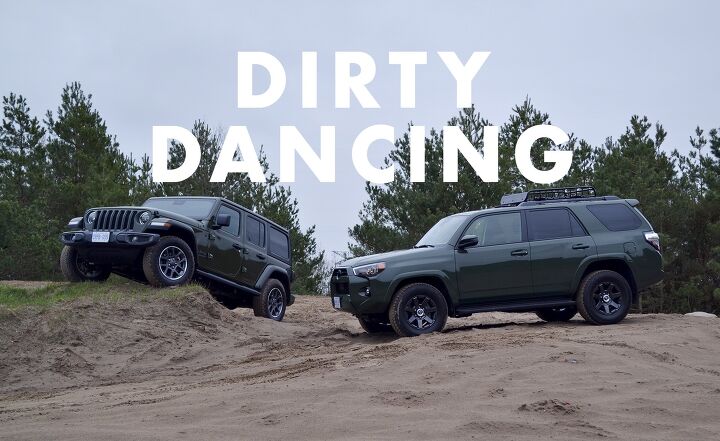


































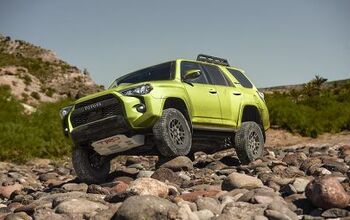

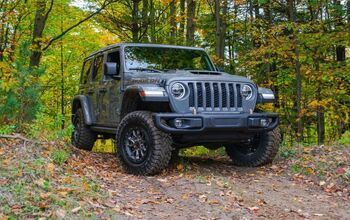
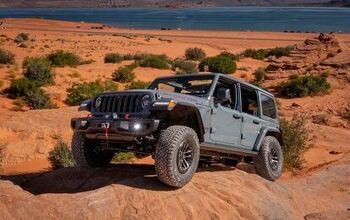

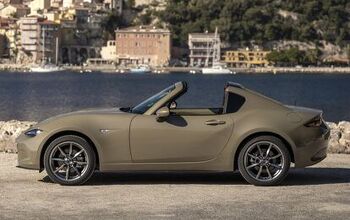
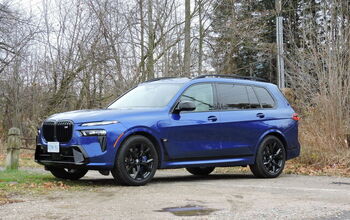

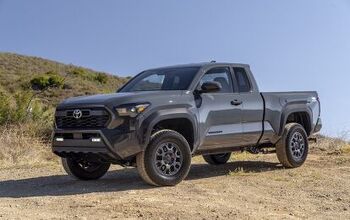

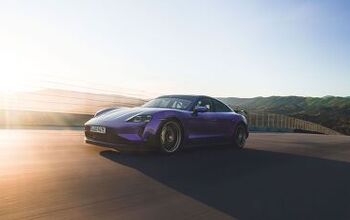
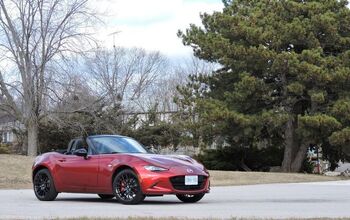
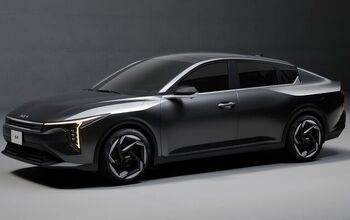


Comments
Join the conversation